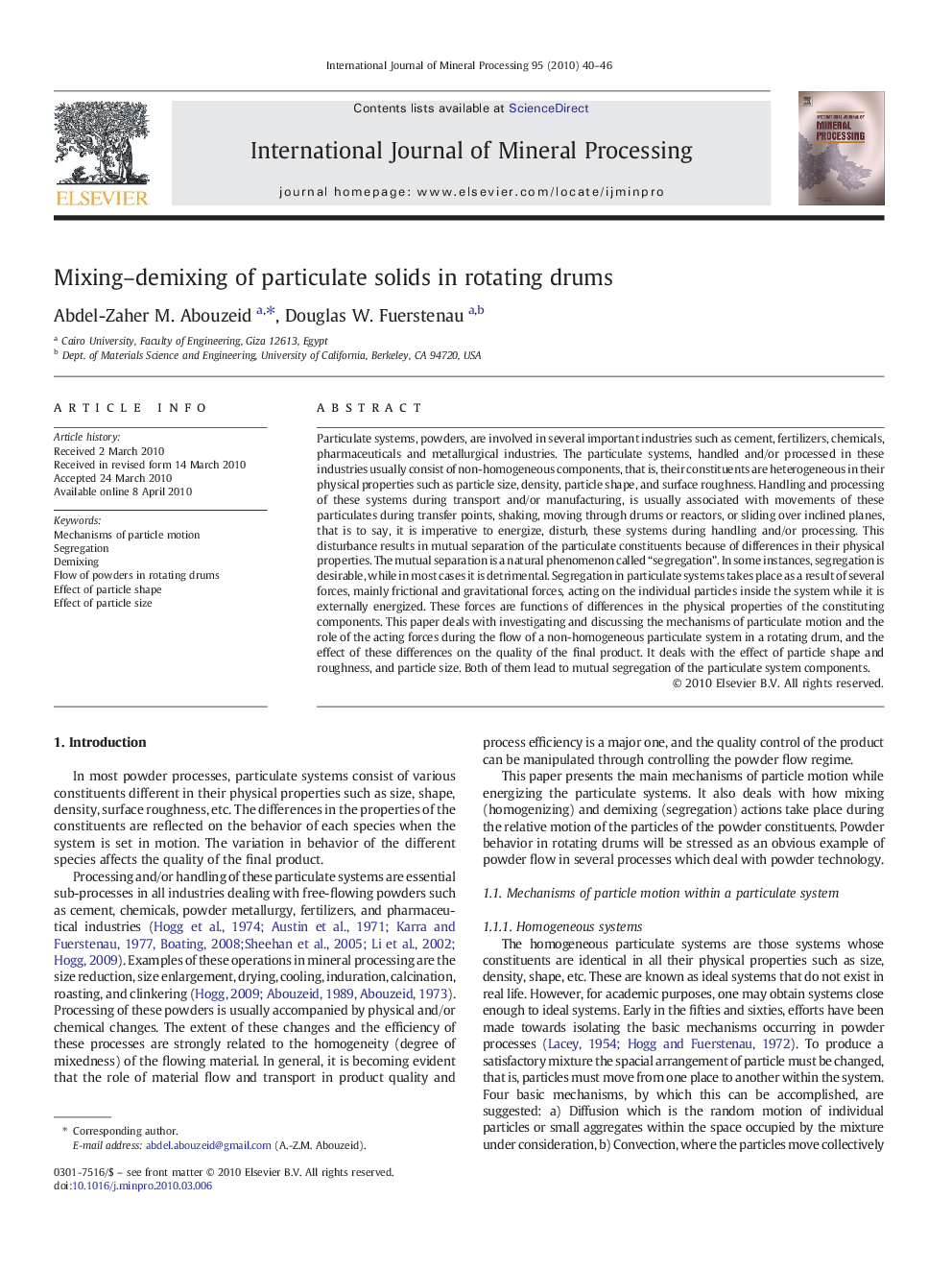| Article ID | Journal | Published Year | Pages | File Type |
|---|---|---|---|---|
| 214282 | International Journal of Mineral Processing | 2010 | 7 Pages |
Particulate systems, powders, are involved in several important industries such as cement, fertilizers, chemicals, pharmaceuticals and metallurgical industries. The particulate systems, handled and/or processed in these industries usually consist of non-homogeneous components, that is, their constituents are heterogeneous in their physical properties such as particle size, density, particle shape, and surface roughness. Handling and processing of these systems during transport and/or manufacturing, is usually associated with movements of these particulates during transfer points, shaking, moving through drums or reactors, or sliding over inclined planes, that is to say, it is imperative to energize, disturb, these systems during handling and/or processing. This disturbance results in mutual separation of the particulate constituents because of differences in their physical properties. The mutual separation is a natural phenomenon called “segregation”. In some instances, segregation is desirable, while in most cases it is detrimental. Segregation in particulate systems takes place as a result of several forces, mainly frictional and gravitational forces, acting on the individual particles inside the system while it is externally energized. These forces are functions of differences in the physical properties of the constituting components. This paper deals with investigating and discussing the mechanisms of particulate motion and the role of the acting forces during the flow of a non-homogeneous particulate system in a rotating drum, and the effect of these differences on the quality of the final product. It deals with the effect of particle shape and roughness, and particle size. Both of them lead to mutual segregation of the particulate system components.
